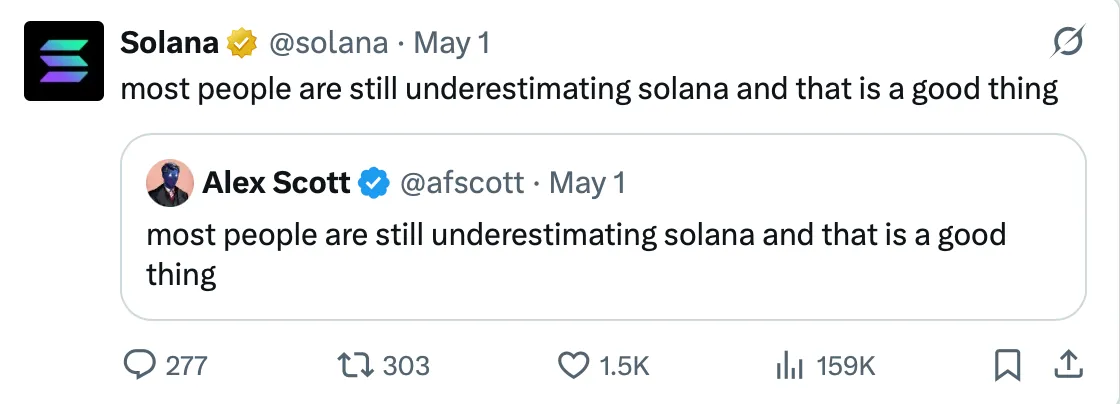Author: FLOW
Compiled by: Tim, PANews
The crypto market has been in a downward trend since the end of January, mainly due to macro uncertainty and weak sentiment. However, we have recently observed a new round of upward momentum in the market.
Although it’s still early days, there are signs that we may be at a turning point in the evolution of cryptocurrency. This trend inspired me to write a piece about the current state of the Solana ecosystem.
For me, Solana remains one of the strongest first-layer blockchains on the market. It is the fastest growing ecosystem in the crypto space, one of the few public chains that truly has a natural growth advantage, and has even surpassed Ethereum in many on-chain metrics.
Without further ado, let’s get started.
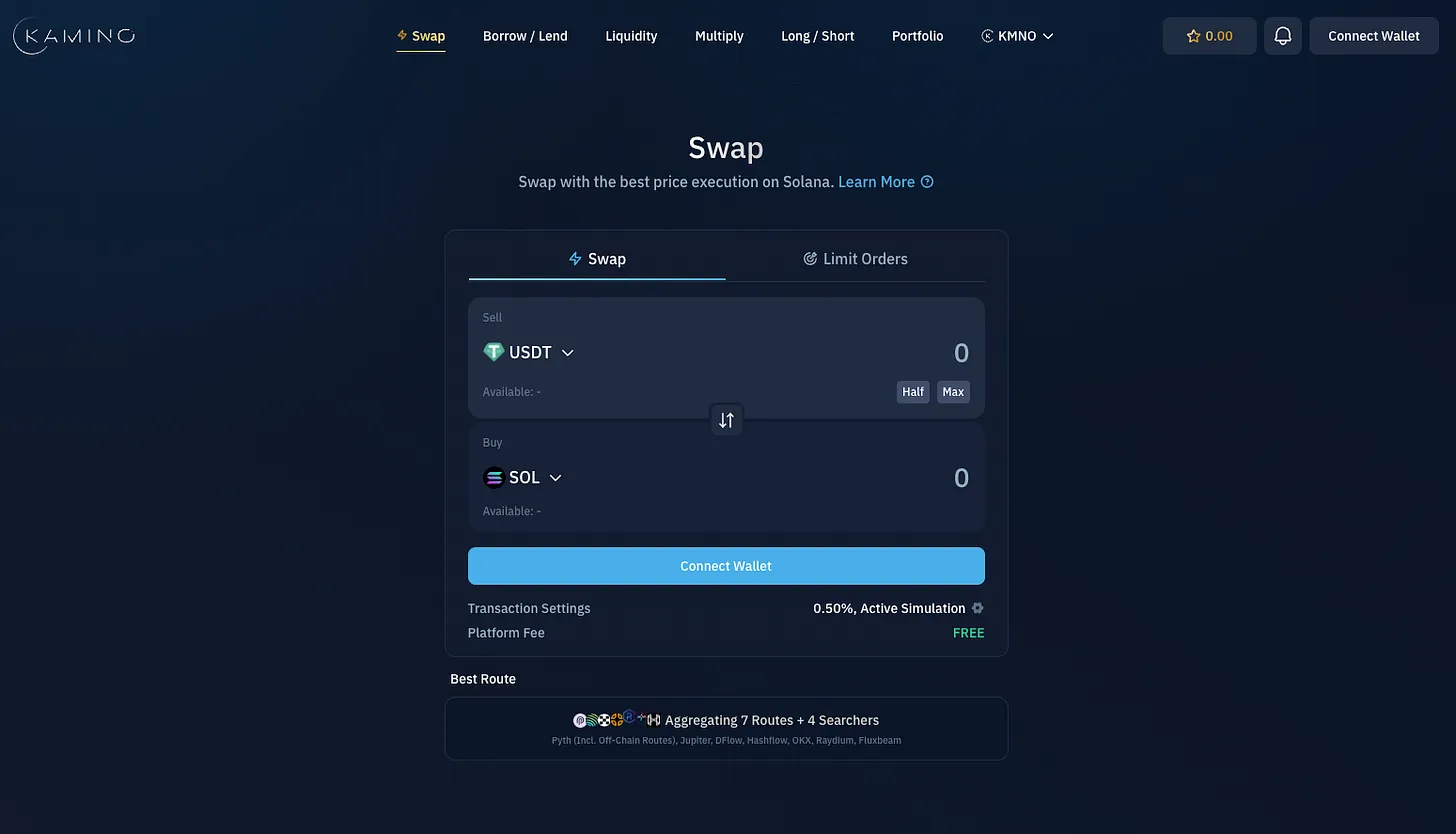
Next topic of discussion:
- Network Status
- On-chain activities
- Ecosystem
- SOL Price Analysis
Solana Network Status
Let’s start our analysis by putting aside price factors and focusing on fundamentals. It is important to note that Solana, as a blockchain network, seems to be in its strongest development phase ever.
Solana Network Stability
In its early stages, Solana was criticized for network outages and instability. However, this seems to be a thing of the past. The network has not experienced an outage since February 2024.
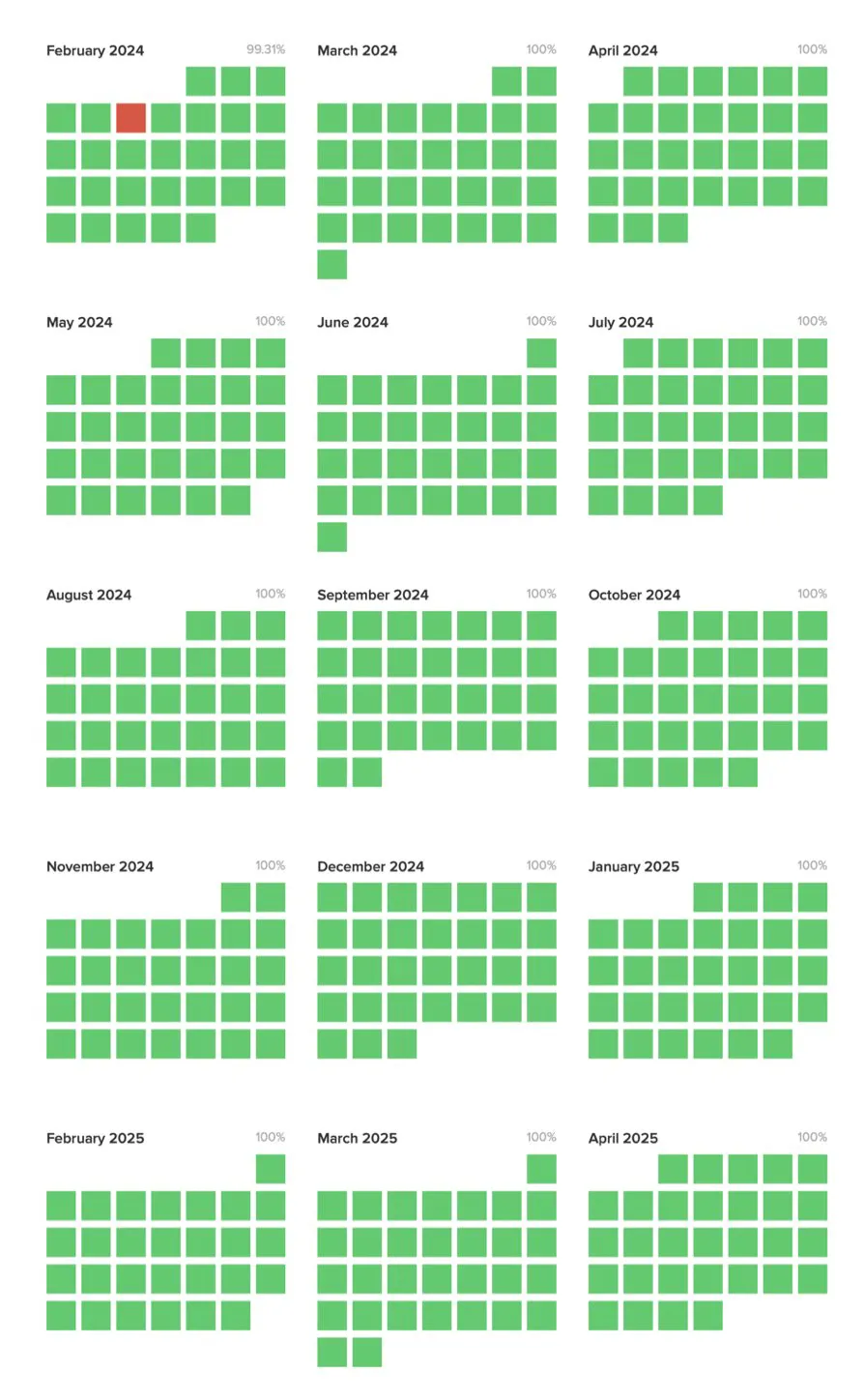
The Lindy effect is a powerful force in the crypto space, and it is an important indicator of trust and reliability. I think this is the key reason why Ethereum has been favored by large institutions so far: since the mainnet was launched in 2015, the network has always maintained a zero-network downtime operation record.
Although Solana is still a little lacking in this regard, its performance is encouraging. As uptime increases, trust and reliability also increase, which is crucial.
Decentralization
Blockchain is guided by the principle of decentralization, which distributes power and decision-making among nodes, making the network resilient. A simple indicator to measure the degree of decentralization is the Nakamoto coefficient, where the higher the value, the more decentralized the system. According to the latest data from CoinTelegraph, Solana stands out with a Nakamoto coefficient of 21.
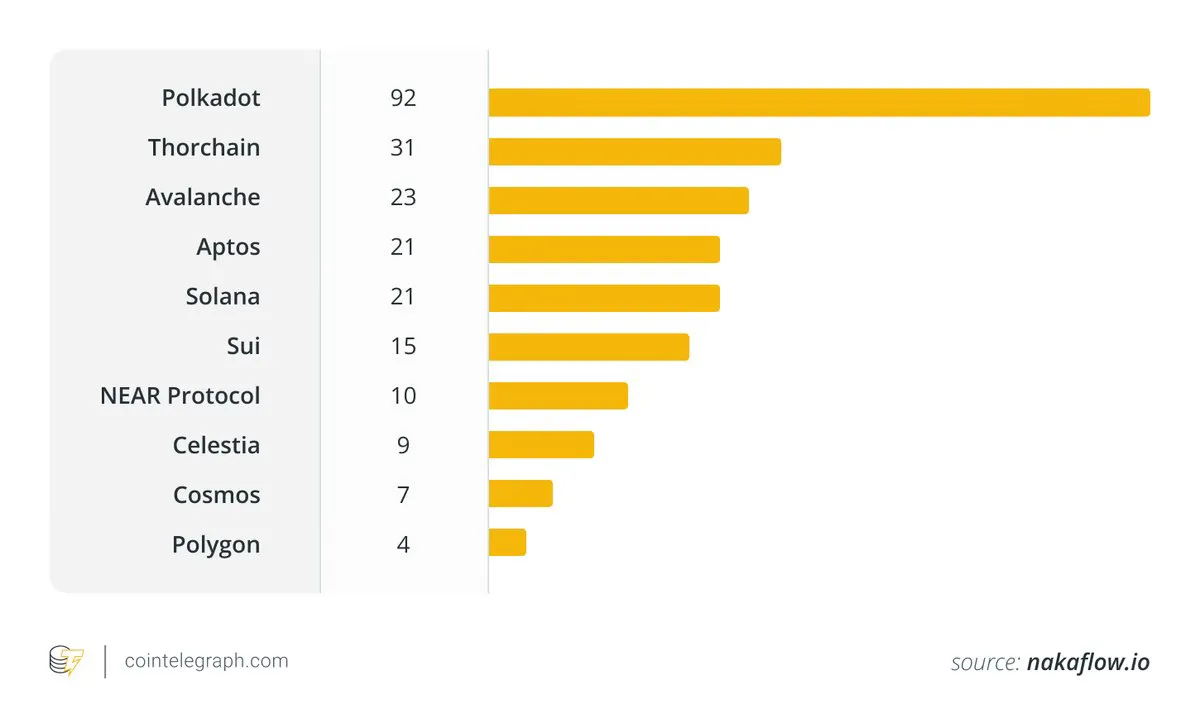
Another key indicator of decentralization is client diversity. Having multiple validator clients reduces the risk of single points of failure, which is critical to the maturity of blockchain. Currently, only Ethereum has achieved an ecosystem where multiple independent validator clients coexist. At this stage, Solana only has one validator client, which is provided by Solana Labs (although Jito Labs' version is essentially a fork and not an independent implementation). However, two independent clients are in the process of development: Firedancer developed by Jump Crypto, and Sig created by Syndica. Once these clients are officially launched, they will significantly improve the decentralization of the Solana network by getting rid of the reliance on a single code base and introducing true client diversity.
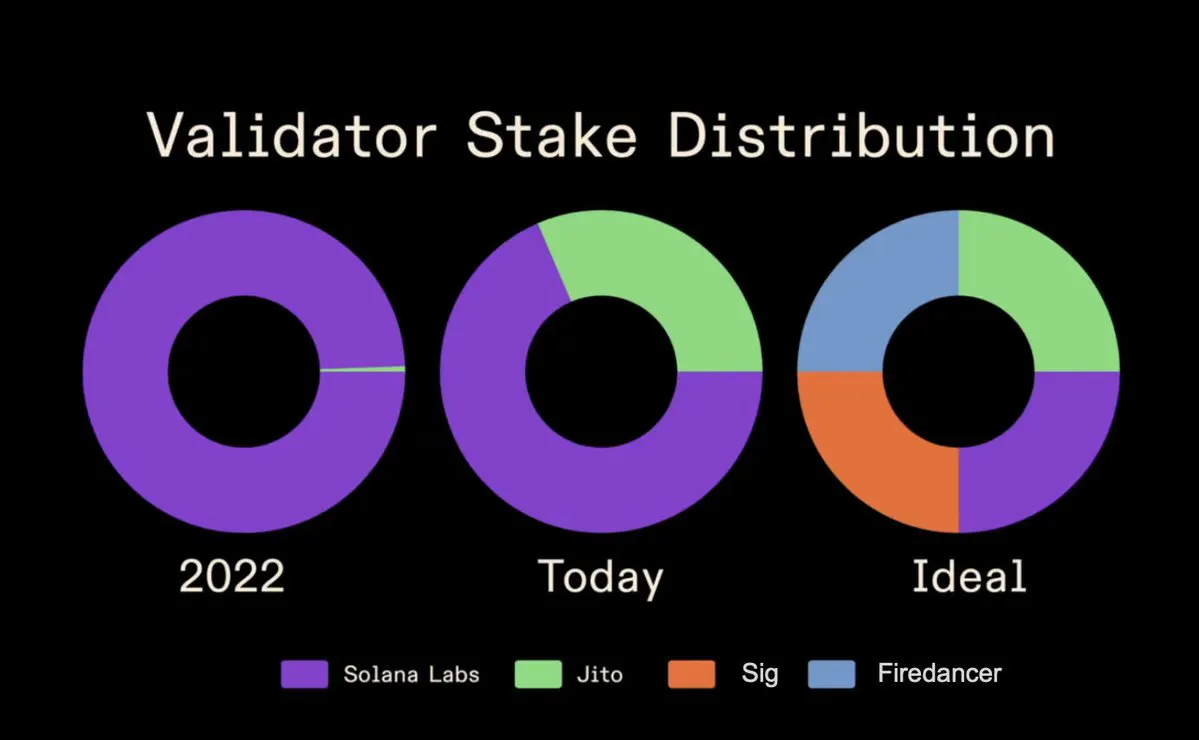
SOL pledge market value
Solana also recently surpassed Ethereum to become the blockchain with the largest staking market capitalization. On the surface, this shows that Solana is currently leading in economic security. This number will become even more important after the mainnet activates the slashing mechanism.
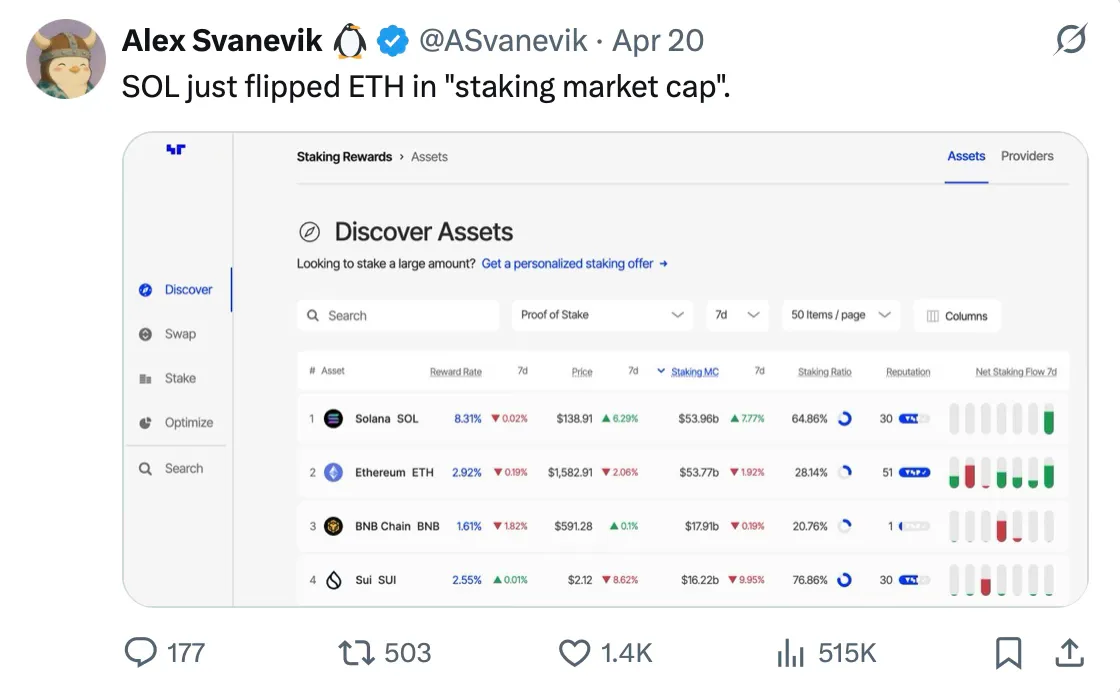
(PS: I know the topic of “economic security” is controversial and involves a lot of simplifications, but for the sake of this article, I’ll use the staked market cap as a valid metric.)
Developer activity
Developer activity is another important indicator to observe. Ultimately, it is the activity of developers that is building the future of blockchain. Electric Capital’s latest report shows that Solana has become the preferred ecosystem for new developers in 2024.
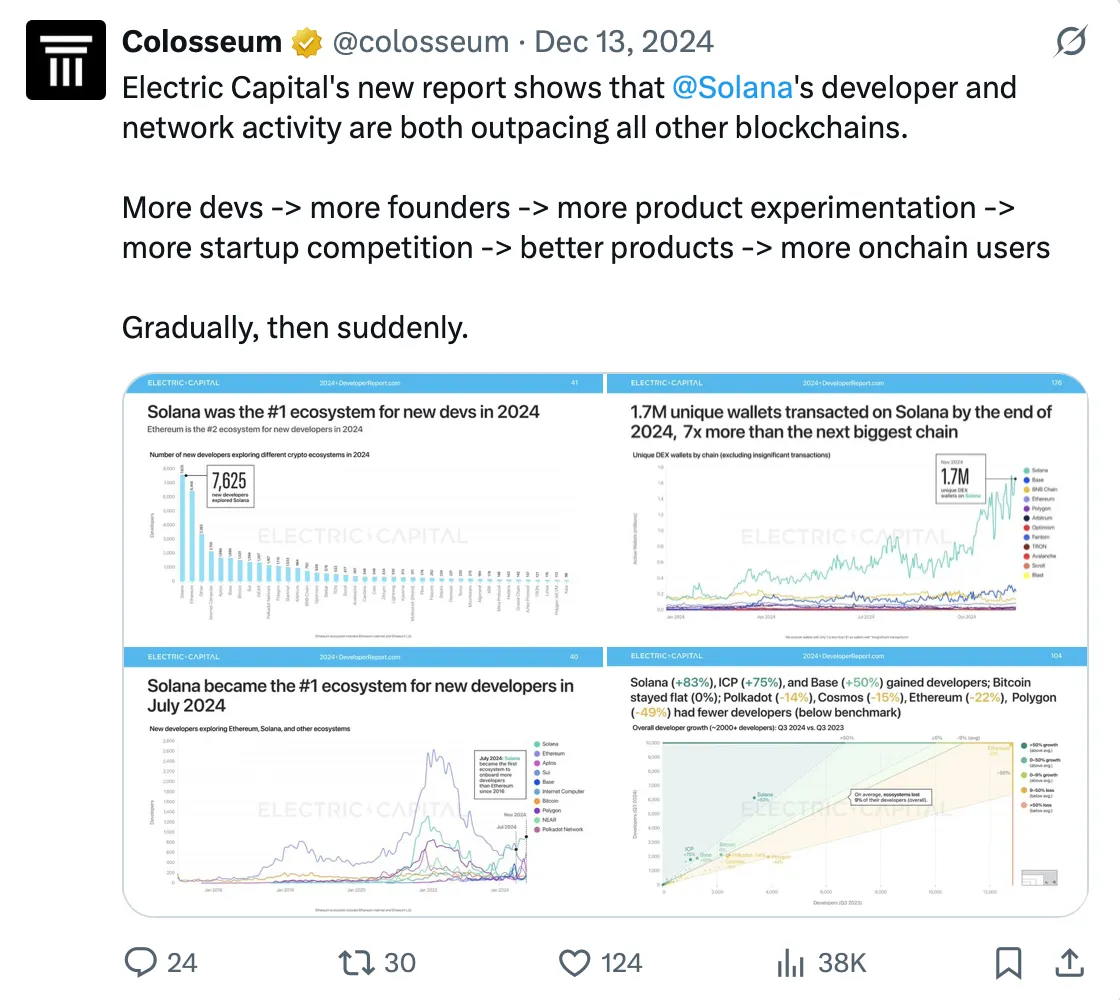
Last but not least, several new initiatives are emerging that aim to improve Solana’s performance at the communication layer (e.g. DoubleZero), which is another important vertical to keep an eye on in the future.
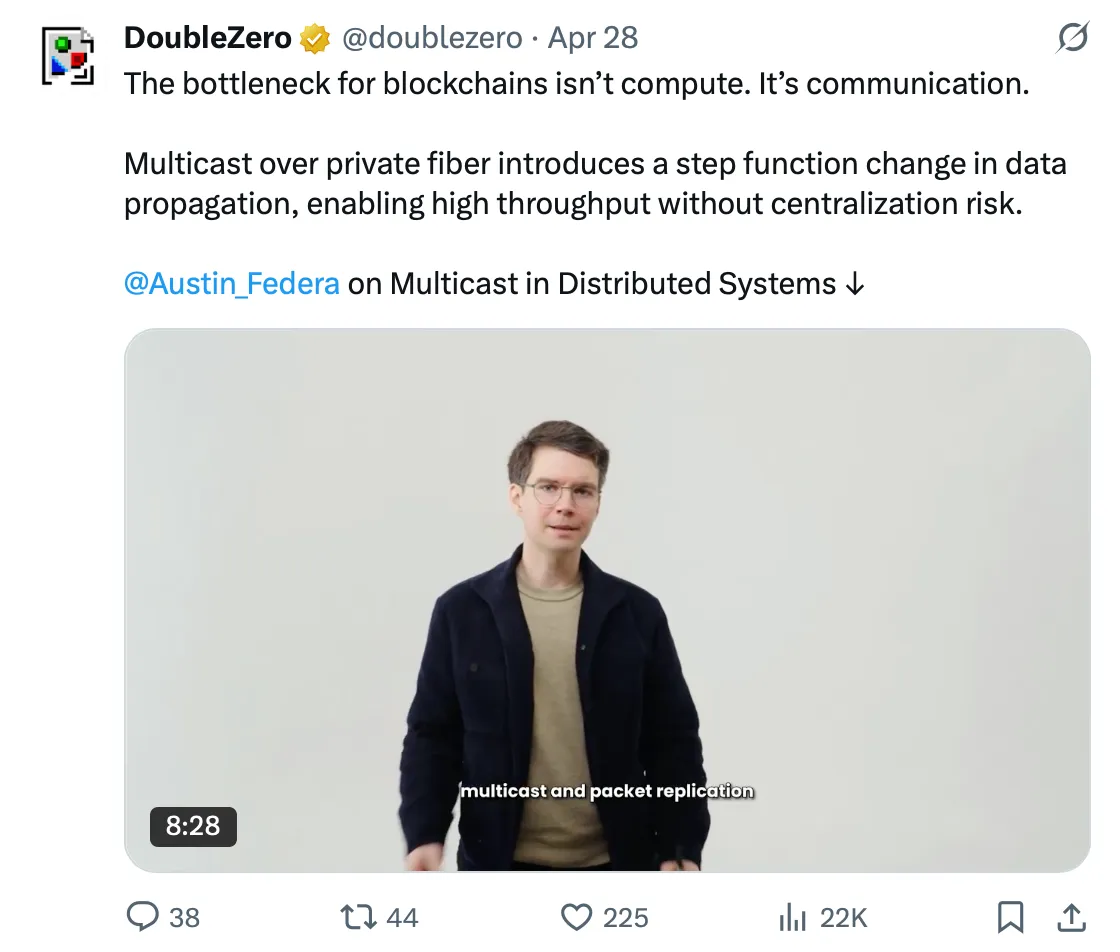
On-chain activity
Since the beginning of 2024, on-chain activity has been in a significant long-term upward trend, with many new projects emerging and the DeFi ecosystem showing a thriving trend. This can be confirmed by different indicators.
TVL
TVL has climbed from less than $1 billion at the end of 2023 to a record high of more than $15 billion in early 2025. Although TVL has fallen slightly since then, it has remained stable around $10 billion, demonstrating strong market resilience.
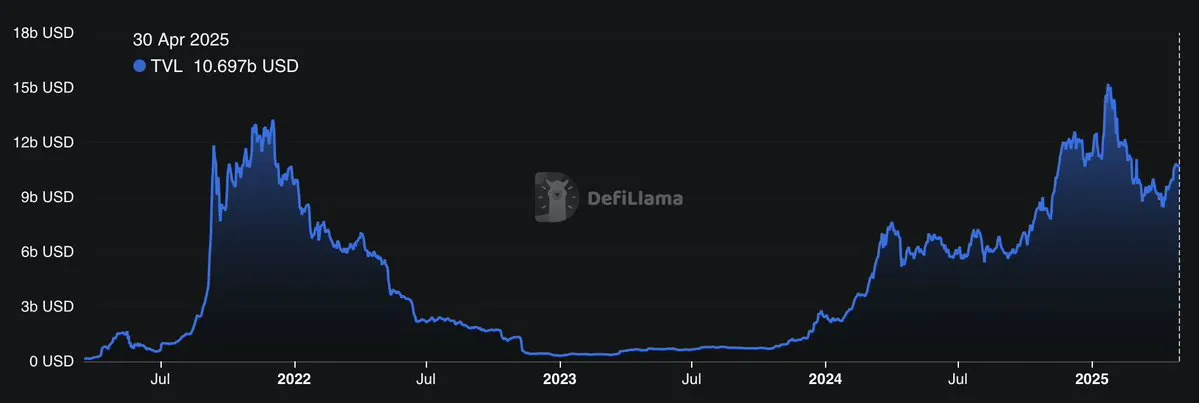
Stablecoin Market Cap
Solana has also seen strong growth in stablecoin inflows over the past year. As of the time of writing, the stablecoin market cap on Solana has reached an all-time high of $13.2 billion. This is a clear indication of the continued growth in adoption and trust in the network.
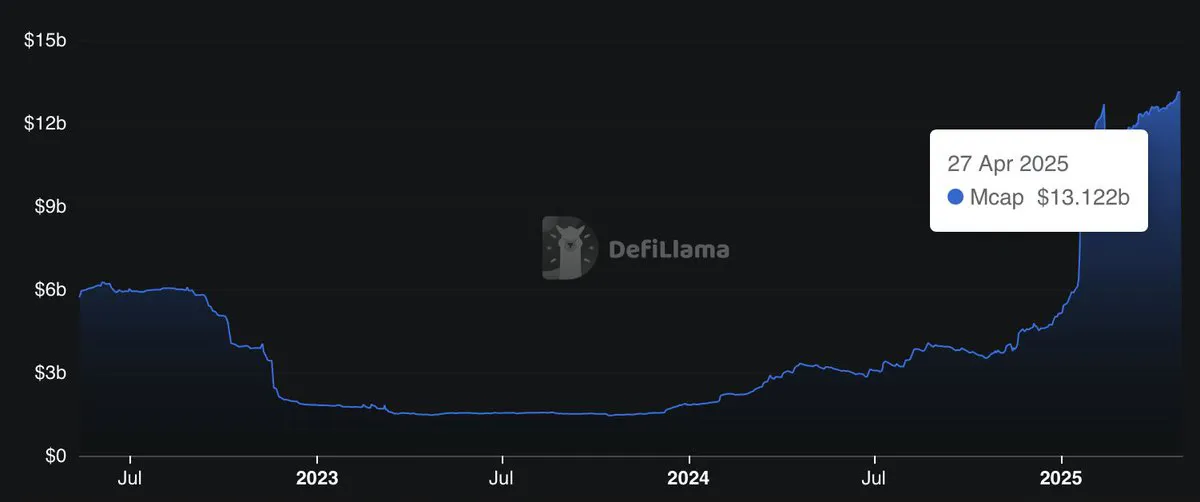
Transaction Fees
Judging from last year’s total fee ranking, Solana ranks third among L1 blockchains in terms of transaction fees, and the gap with Ethereum is very small, which once again confirms the high activity and strong market demand on the network chain. 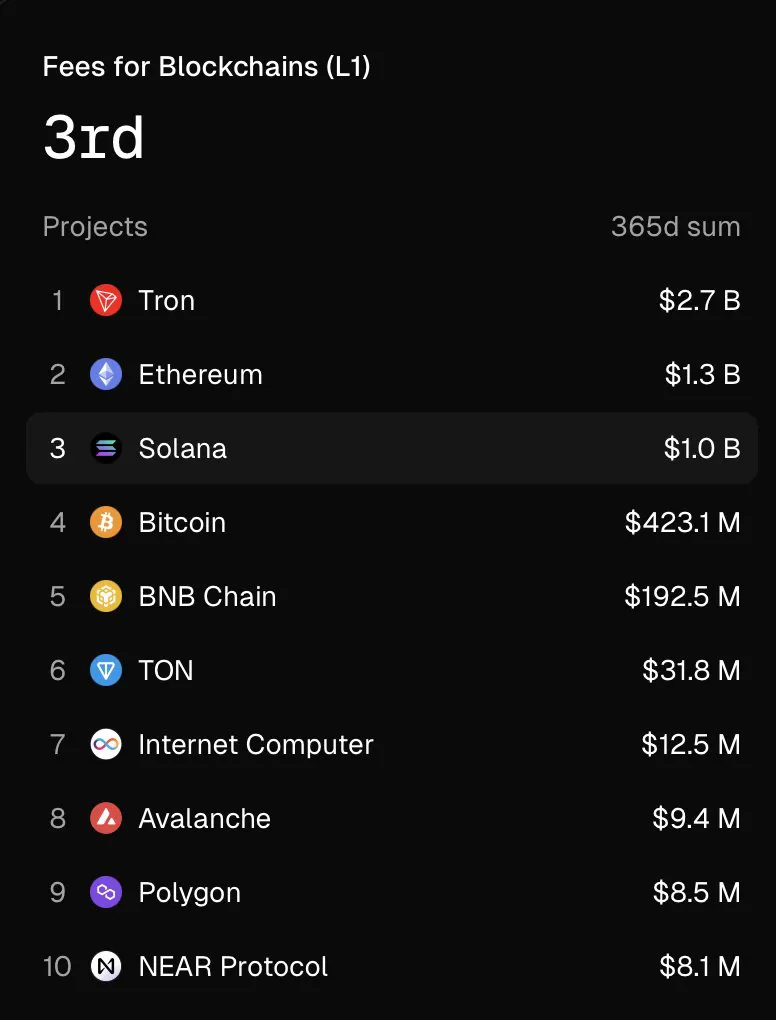
Ecosystem
The purpose of blockchain is to provide a foundation for applications to be built and flourish. Opponents may say that Solana’s success is only due to the craze of Pump.fun and Memecoin, but I think this view ignores the more important reason: Solana is the fastest growing ecosystem in the entire crypto field, and its development momentum is increasingly coming from real application scenarios.
In fact, I think we can even assert that in the long run, the meme coin craze happening on the Solana blockchain is actually more beneficial than harmful. This phenomenon has acted like a carrot, allowing Phantom wallets to be successfully installed on millions of mobile phones around the world. This approach effectively solves the "cold start problem" that all emerging networks face, that is, how to break through the bottleneck of the initial user base.
With the successful onboarding of its existing user base, Solana is well positioned to support more applications with real value and continue to drive its growth.
DeFi is maturing
The DeFi ecosystem on Solana is maturing. As mentioned above, Solana has become the second largest Layer 1 blockchain by TVL, and is one of the few public chains that can break through the historical TVL peak in 2025 and continue the growth momentum of the previous cycle. This performance reflects both the high stickiness of users and its real market appeal.
The first wave of DeFi on Solana in 2021 was largely experimental and hype-driven, but now its growth appears more sustainable, with more solid foundations and clearer market fit.
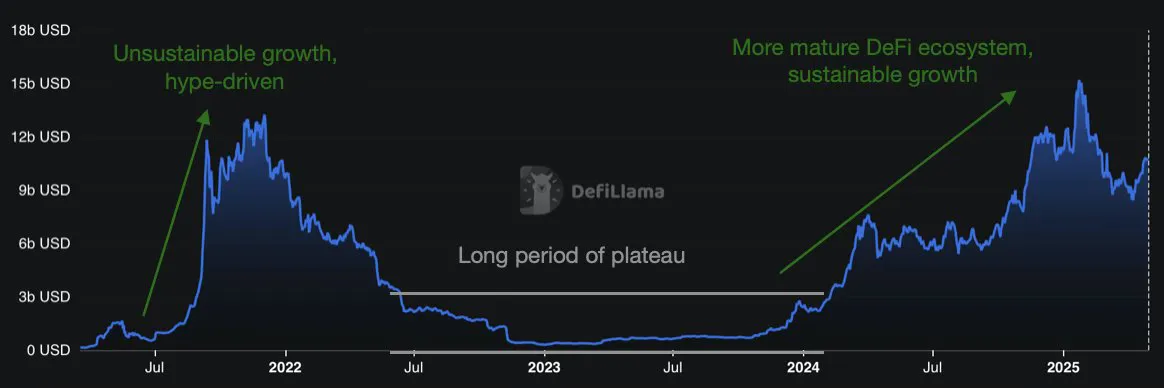
Protocols that I think are worth mentioning include Jito, Kamino, Marinade, Radium or Jupiter.
To show the speed of Solana’s development, the official X released some updates in May:

In addition, we are also witnessing the emergence of a new wave of DeFi primitives, among which the following are worth noting:
- Real income platforms such as RateX, Exponent Finance, Sandglass or Pye Finance
- Liquidity re-staking through Kyros
- New stablecoin base protocol in partnership with Perena, Global Dollar or KAST Card
- Yield aggregators like Lulo and Carrot
- Switchboard-based oracle
There are many similar examples.
Solana also continues to attract existing protocols, the most recent example being 1inch, which just launched its mainnet.

DePIN rises
In addition to DeFi, we have also witnessed the rise of DePIN. According to Dune data, 46.5% of the total market value of DePIN is currently concentrated on the Solana blockchain, and has incubated top projects such as Helium, Hivemapper, and Render.
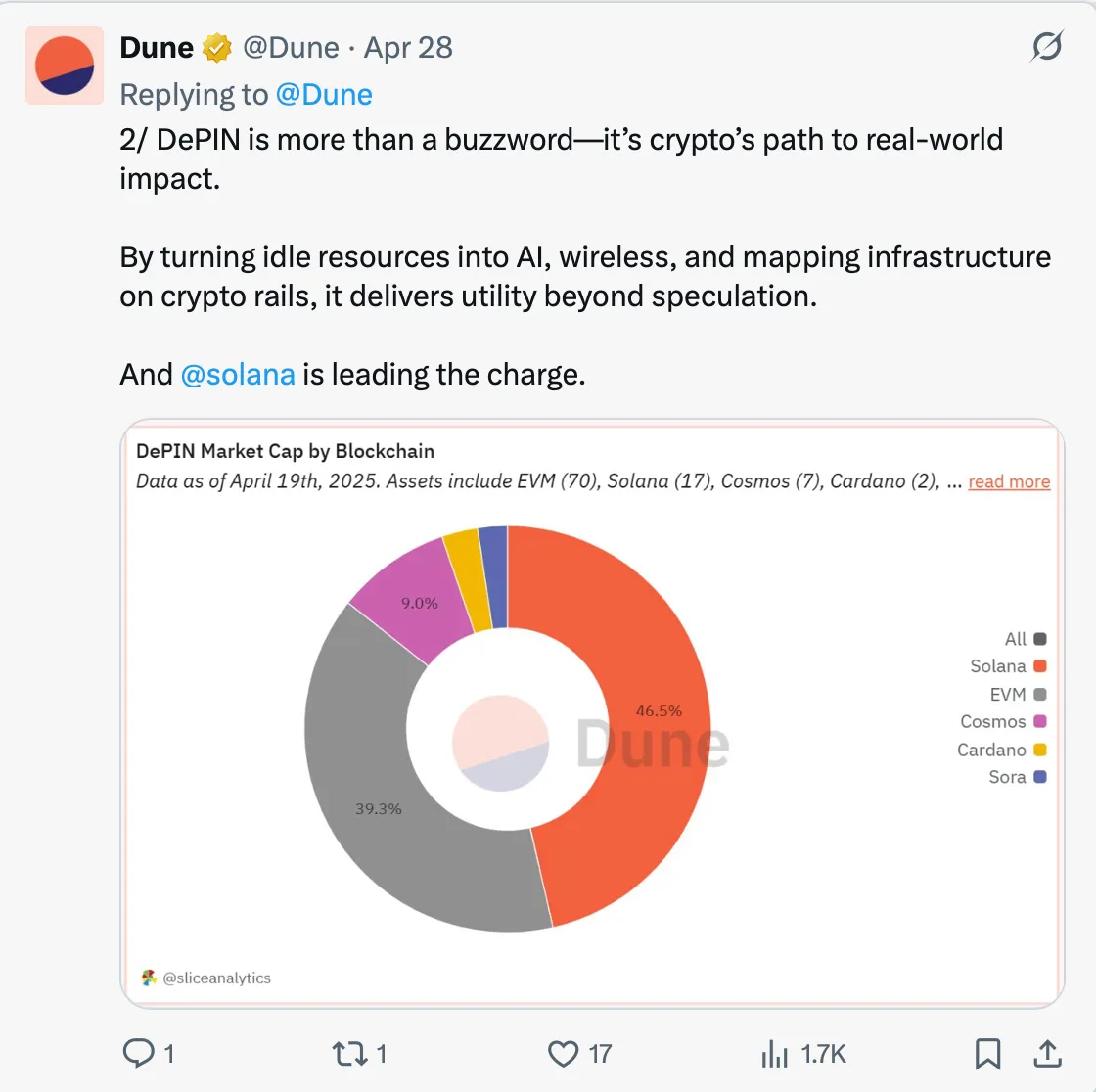
They distributed over $400 million to the people involved in these projects, which is a huge amount.
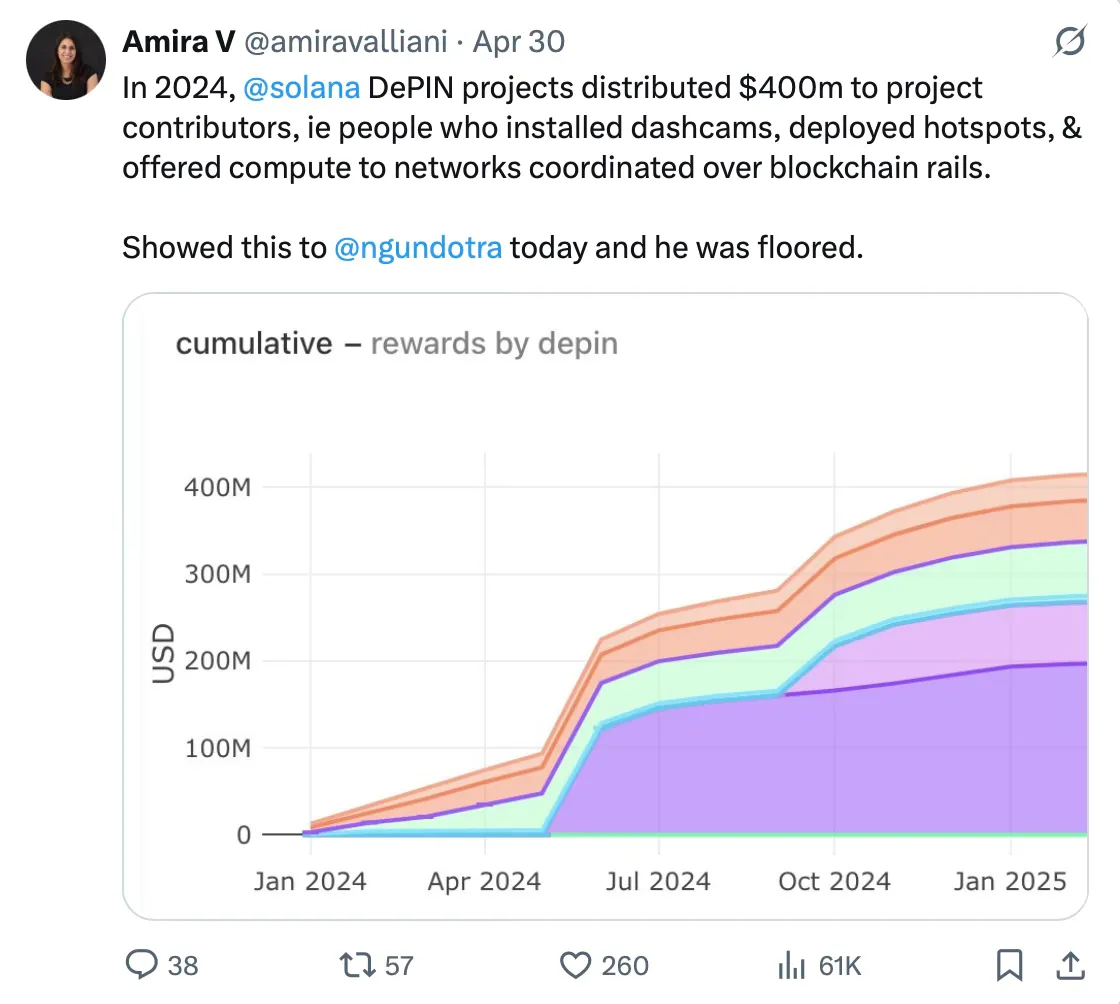
Consumer Application Breakthrough
Although it’s still early days in crypto, there is a strong push to break into consumer applications. It’s a challenging track that will take a lot of time and trial and error to break through, but seeing talent like Nikita Bier join Solana as an advisor makes me optimistic.
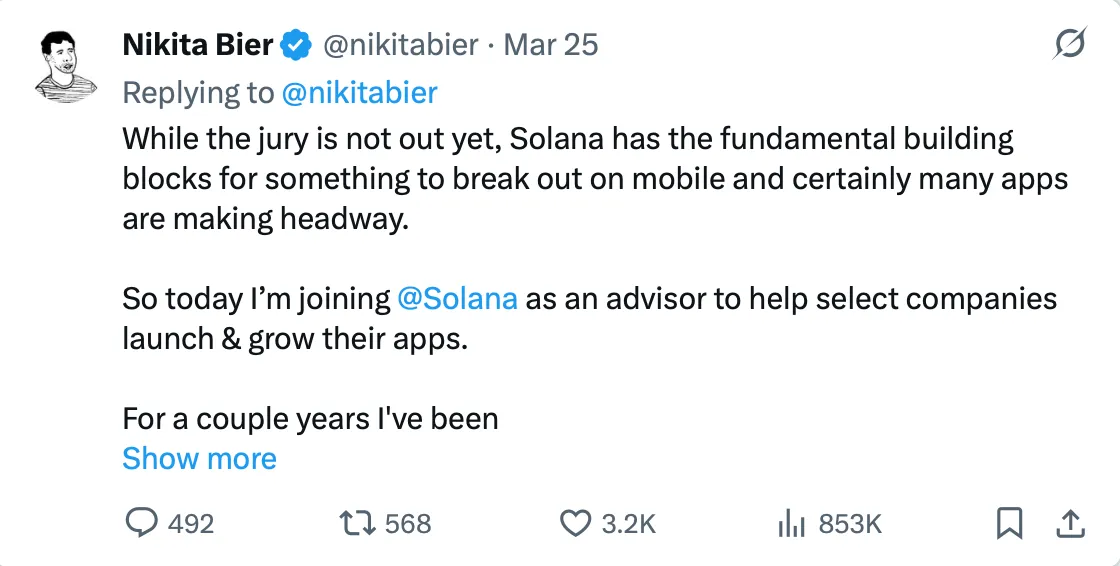
Currently, crypto developers cannot find a more ideal platform than Solana. This blockchain network is attracting top talents and providing the most supportive initiatives: active ecosystem funds, intensive hackathon activities, and a strong developer culture, where the vitality of start-ups is truly surging. Data can also confirm this prosperous trend: according to the analysis of blogger Qw Qiao, Solana is about to surpass other platforms for the first time and become the blockchain ecosystem with the largest number of Alliance founders.
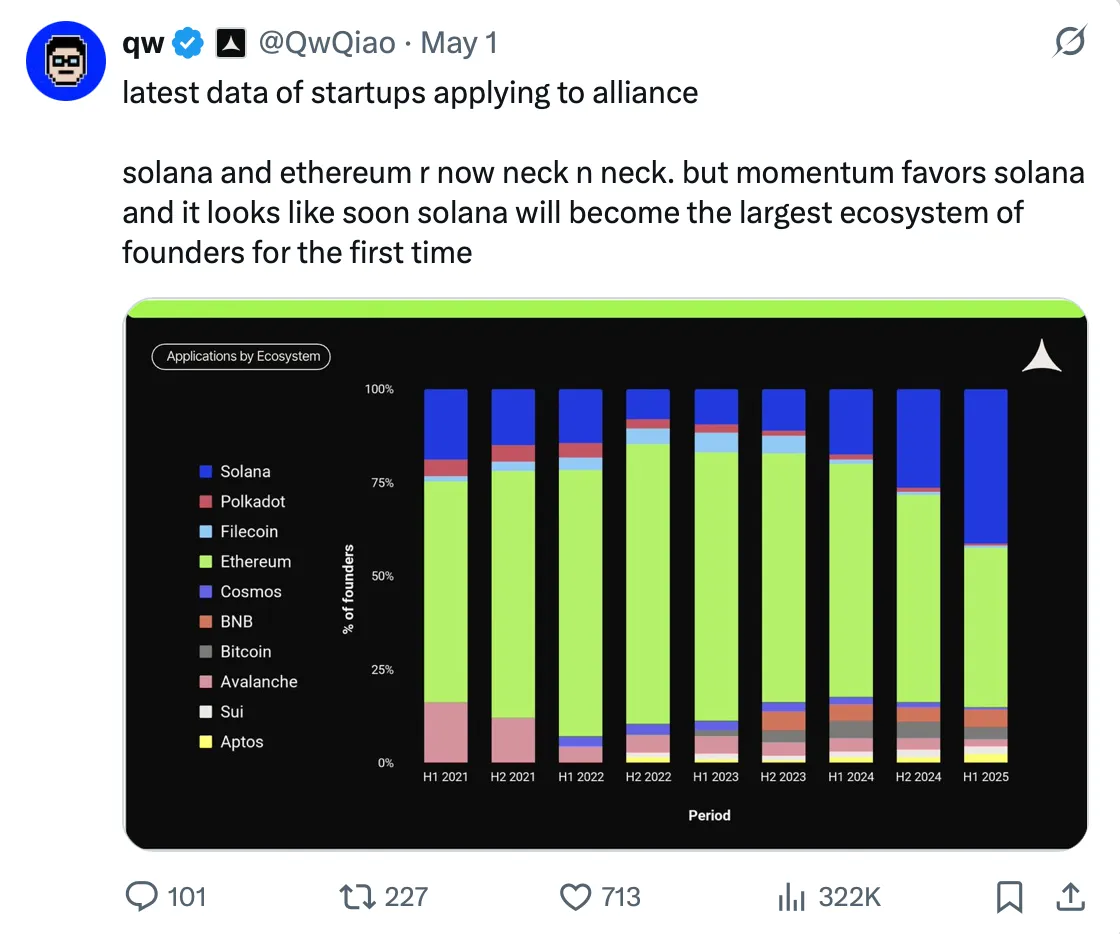
This makes me believe that Solana is the most likely of all first-layer blockchains to be the birthplace of the first breakthrough crypto consumer application. If this scenario comes true, it will be a big boon for the network. Subsequent developments are worth keeping a close eye on.
Strong community
So far, we’ve explored many of the metrics and tangibles used to evaluate a network. But I would argue that Solana’s greatest strength is something intangible: its community.
It’s often said that communities that have experienced their darkest moments (such as the FTX crash) will eventually rise from the ashes and become more resilient, and I think this is part of the story. Another key factor is the Superteam community, which has done an excellent job in cultivating talent and maintaining momentum, and has always injected vitality into the ecosystem.
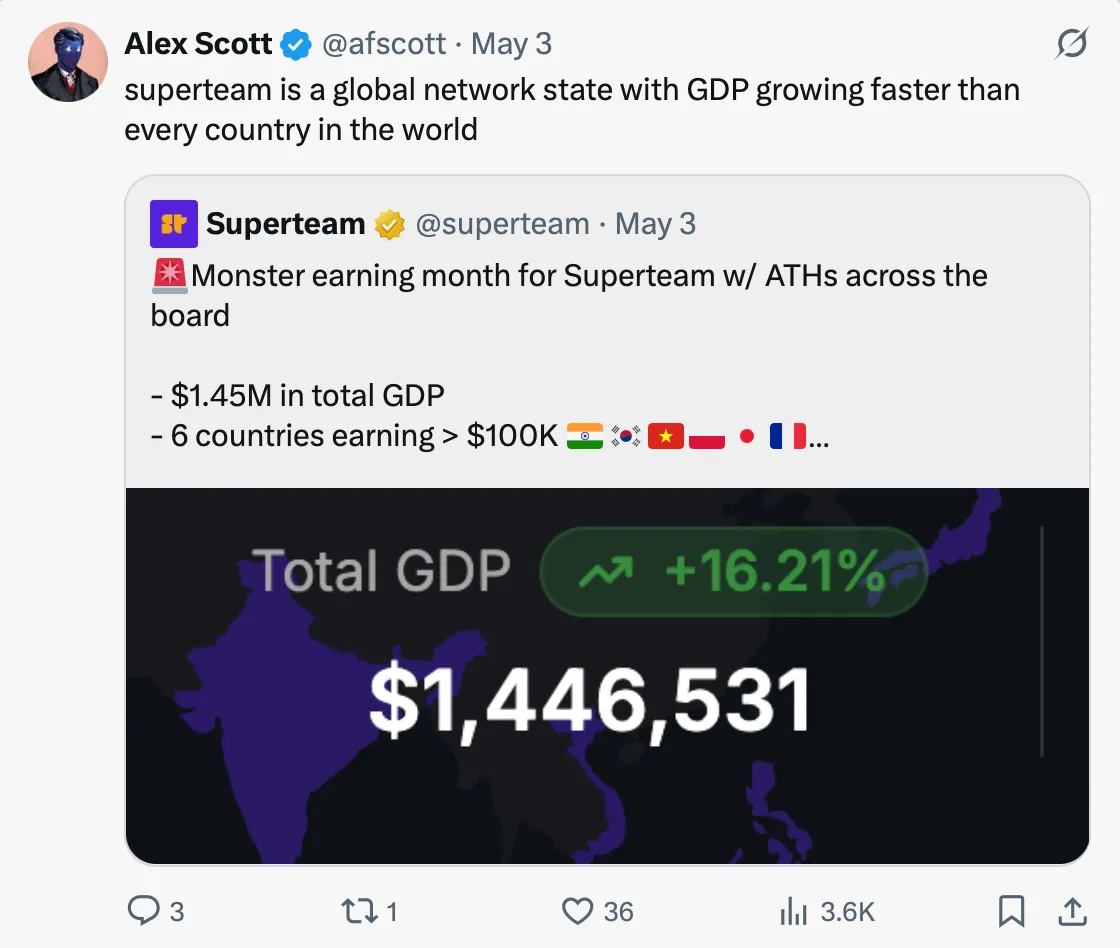
In my opinion, this is one of the secrets of Solana’s success, and it is simply impossible to replicate. No other blockchain project in the crypto space has this kind of cultural heritage.
Institutions are entering the market
Institutional interest in blockchain networks is also accelerating. A recent example is that BlackRock BUIDL Fund expanded its business to Solana after Ethereum. There are many similar cases, but I think this is enough to illustrate the problem: traditional finance's confidence in on-chain infrastructure is growing.
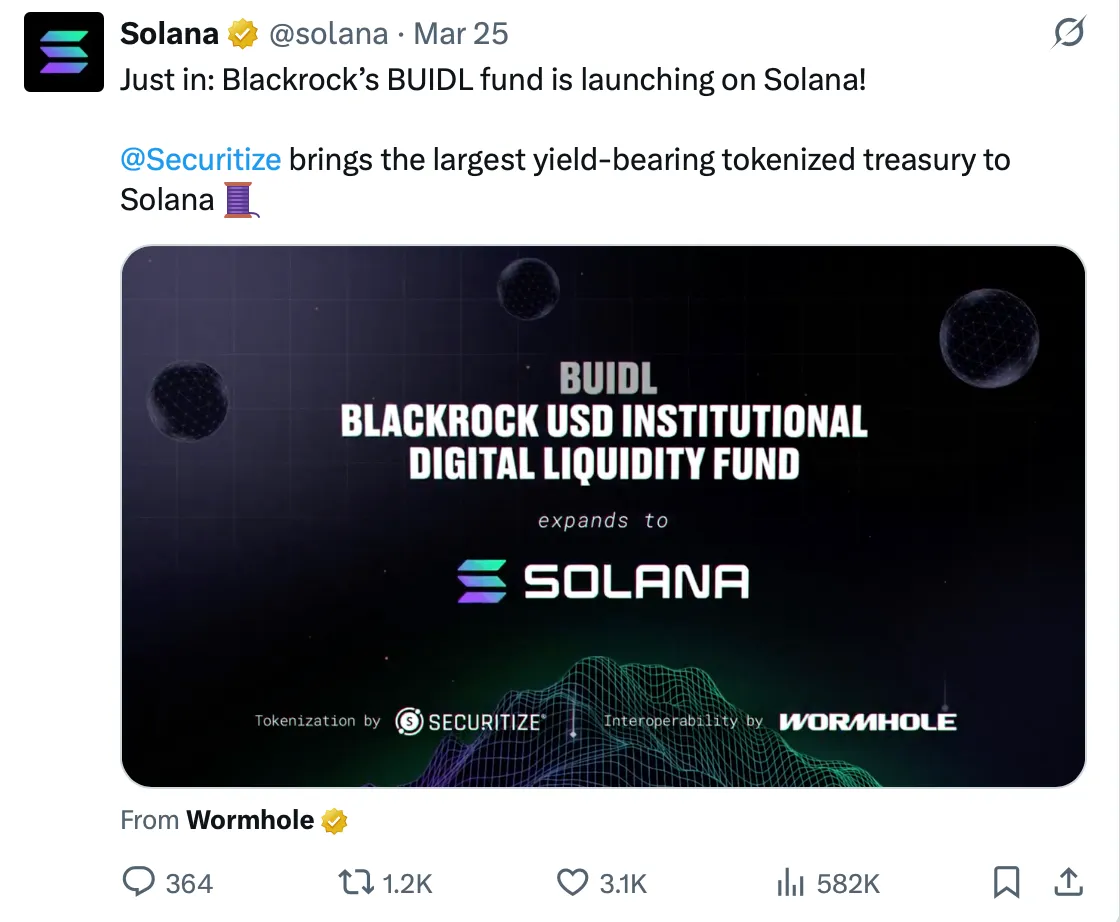
In addition, Solana is likely to be the next crypto asset to receive spot ETF approval in the United States. According to the current forecast of the Polymarket platform, the probability of approval in 2025 is 77%. The passage of the ETF will further officially recognize SOL as an investable asset, while consolidating Solana's market position as a network with high trust and integrity. This regulatory recognition is expected to open up new channels for participation for institutional and retail investors, attracting more incremental funds into the Solana ecosystem.
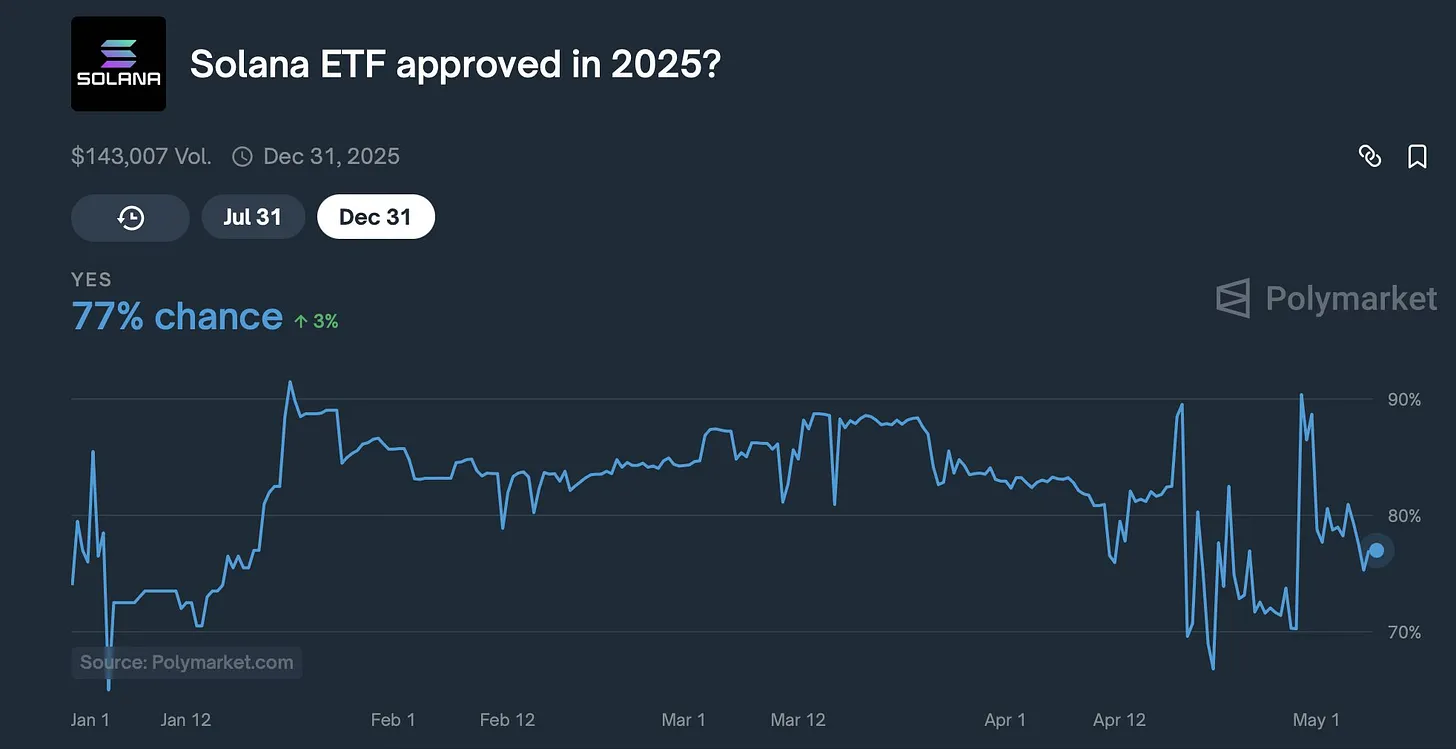
SOL Price Analysis
Judging from the price trend, SOL experienced its first hype boom between 2020 and 2021. But like most emerging protocols, its infrastructure was not yet perfect and its ecosystem was not yet mature. As the cryptocurrency market entered a bear market in 2022, this enthusiasm quickly faded. The impact of the FTX exchange crash made the situation even worse, and many people believed that Solana was already a "dead project."
Unlike most protocols that struggled to recover, Solana came back stronger. After about a year and a half of sideways trading, SOL broke out of its price range for the first time, kicking off the first surge of a new bull run. In fact, it became one of the few first-layer protocols to hit a new all-time high since 2021, and this time there is a real and strong ecosystem behind it.
The current situation is that after SOL plunged nearly 67% from its all-time high in January, it has now rebounded strongly to around $170. Although there may be some signs of overbought in the short term, the outlook is extremely explosive in the medium and long term.
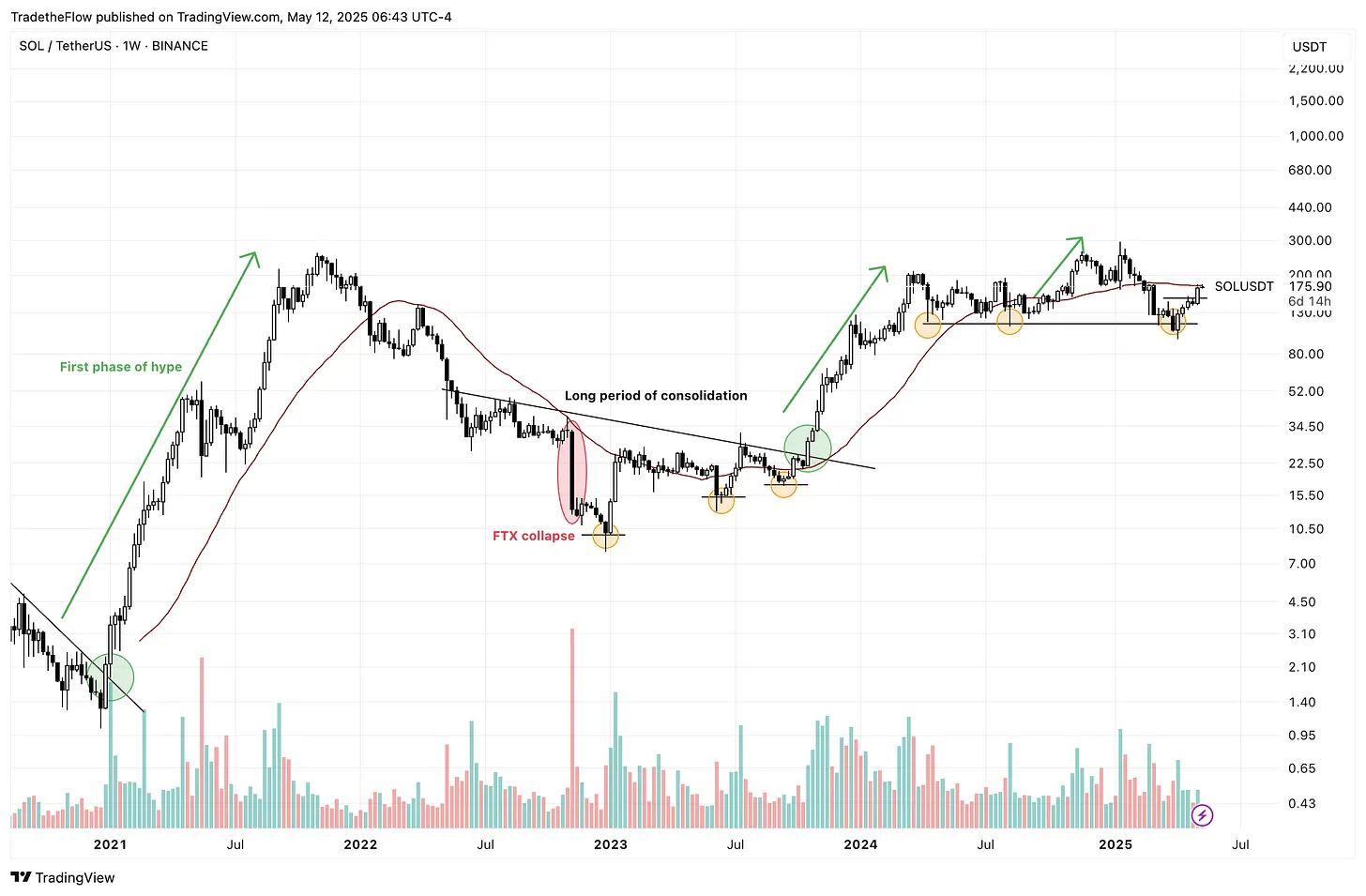
In the mainstream L1, SOL also showed significant relative strength. The current SOL/ETH exchange rate has formed a clear upward trend and is approaching its historical high.
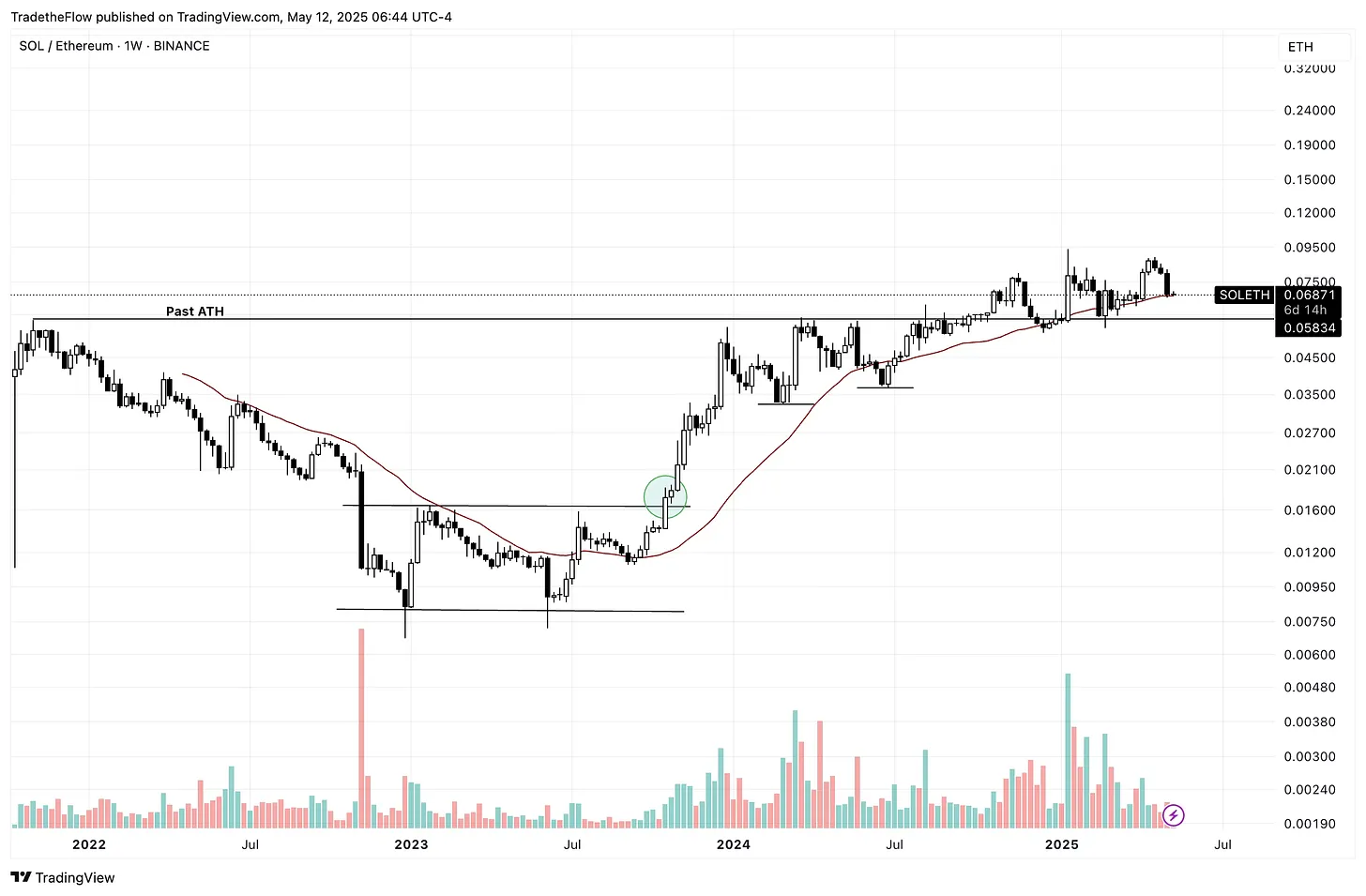
What's next?
Of course, we can’t predict where prices will go now. Instead, what we can do is build a framework to better evaluate investment opportunities from a risk vs. reward perspective. A simple heuristic I like to use is to compare the change in fundamentals and price of an asset from point A to point B.
At the moment, what I see is that you can now buy SOL at the same price that the market paid during the frenzy of 2021. At that time, Solana was just a dream, with no product-market fit and the DeFi ecosystem just starting. Today, the network has a bright future, it has become the fastest growing blockchain in the cryptocurrency space, with real users, real use cases, and growing institutional interest.
Additionally, I believe that the market structure is evolving, and within this evolution, the underlying network will continue to be where the majority of market value will continue to accumulate.

From this perspective, here are my thoughts:
As more applications and projects continue to be developed on crypto networks, the regulatory environment remains friendly, and adoption rates continue to rise, the value of crypto networks will continue to grow. Eventually, all investors around the world will want a piece of this space.
In addition to Bitcoin, I believe that the first-layer blockchain will still be the core carrier of value sedimentation (they are the operating system of the crypto world).
For all the reasons we mentioned earlier, I think Solana is in a very good position among layer 1 blockchains.
Therefore, I believe that SOL remains one of the best investment opportunities for those who are interested in cryptocurrency for the long term.
I’ll leave you with this: Most people are still underestimating Solana, and that’s a good thing.
